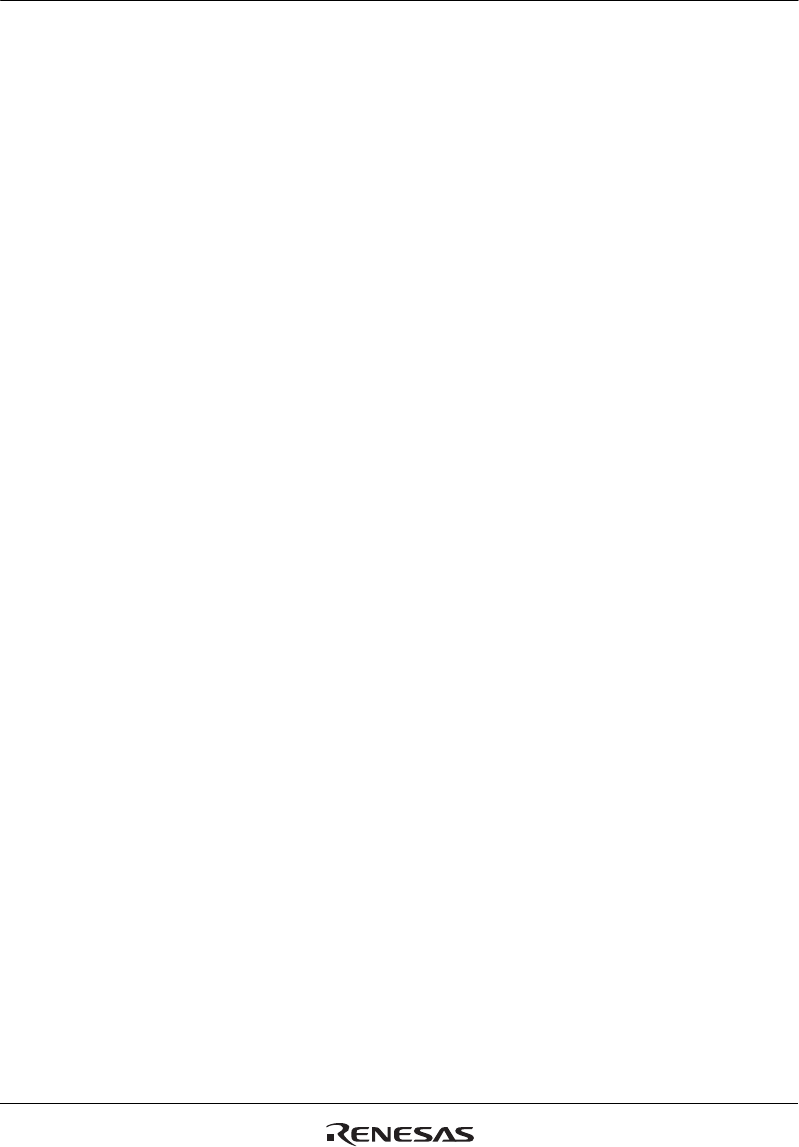
Section 22 Renesas SPDIF Interface
R01UH0134EJ0400 Rev. 4.00 Page 1181 of 2108
Sep 24, 2014
SH7262 Group, SH7264 Group
22.8 Functional Description—Transmitter
22.8.1 Transmitter Module
The transmitter module transmits PCM data and auxiliary information after encoding it according
to the method of biphase-mark modulation that complies with the IEC60958 standard (SPDIF).
The clock for the transmitter module is an oversampling clock supplied from the outside. This
clock usually selects a value that serves as an oversample at a frequency eight times larger than the
clock frequency required for biphase-mark encoding. In this case, the clock frequency required to
transmit 32 time slots in a subframe is 512 times as large as the sample frequency for audio data.
Audio data and channel status information are first written into the module's channel 1 and then
into channel 2. Generally, the channel status need to be written only when the information
changes. The SPDIF module requests that the channel status be written in 30 frames -- when all
the current channel status data have been transmitted. You need to write somewhere between
frame 31 and the beginning of the next block of 192 frames.
The audio data is stored in a double buffer arrangement. To make sure that the first stage buffer is
empty, you can send an interrupt request or poll the status register. DMA transfers send channel 1
audio data on the first request and channel 2 data on the second.
The channel status information is stored in the 30-bit registers of channels 1 and 2. For each
channel, the channel status information per frame consists of 192 bits. Because necessary data
covers only 30 bits, zeros continue to be sent after the transmission of the first 30 bits until the
block is completed.
User data forms a 32-bit double buffer arrangement. You can make sure that the first stage buffer
is empty by either sending an interrupt request or polling the status register. Usually, information
about the user data will become insufficient with the length of data between blocks. Transmission
takes place in a sequence of channels 1 and 2. For the user data within a block, 384 bits are
transmitted before the next block is continuously transmitted.
The audio data handled by the Renesas SPDIF module is a linear PCM, making it possible to set
up to 24 bits. For this reason, the V flag indicating that audio data is a linear PCM remains to be 0.
The V flag involves no register-based setting. An even parity is created for each 32 bits of serial
output data (excluding the preamble).
Note: When transmitter user buffer underrun occurs, the current data in the buffer data of SPDIF
is transmitted until the next data is filled.


















